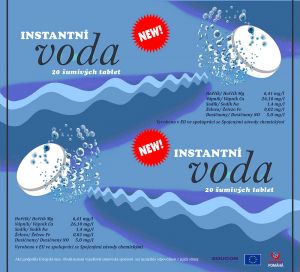Installation Empty Swimming Pool for MDG 7
or
Creating unexpected situations to draw attention from new target groups
Centre
9th step – Getting everything set up
We had everything delivered in the early afternoon. We set up the swimming pool and prepared the sound system for the presenter. The filmmaker got ready for filming.
10th step – Let’s begin
At 4pm the event started off. The actresses and the presenter took their places and everything began. The presenter was interacting with the YMPs, presenting the issue in an interesting and entertaining way. Also, the text transcripted below was prerecorded and played various times. The event took two hours.
11th step – Post production of the video material
We had our video edited by a professional filmmaker. Also the presenter recorded a voiceover for the video.
Translation of the text about the issue, recorded and played during the action:
"Seven billion people live in the world, more than one billion lack access to good quality drinking water – that's almost one in six. It is assumed that if current trends continue, by 2025 two-thirds of all people will live in countries with severe shortages of drinking water (relative to population development and water management). Meanwhile the amount of available drinking water is still declining – in comparison with 1950, less than half. The problems are mainly in sub-Saharan Africa. Causes may be found in the combination of limited resources, environmental changes, and mismanagement. Among other things this is due to insufficient emphasis on local issues – only a few countries have considered the sufficiency of drinking water and at least the minimum sanitary facilities as among their priorities. Another serious problem is that poor people in developing countries are forced to pay for clean water more often than the rich. This inequality is also associated with slums where housing for the poor is rarely connected to the water network. Poor countries are estimated to lose up to eight percent of their gross domestic product due to environmental degradation. In addition to economic problems the lack of drinking water is primarily associated with the health and lives of people. Over 2,5 billion people suffer from bad sanitary conditions. Diarrheal diseases and malaria kill each year about 3,1 million people – from which 1,6 million could be saved if they had access to sufficient safe water and live in better health and hygiene conditions. Due to the lack of drinking water, 1,8 million children die each year. Unlike many world regions, Europe has sufficient supplies of drinking water. The main issues here are pollution and treatment of sewage. Entering the European debate are issues around abuse of water resources, such as maintenance of golf courses in the areas where it may lead to a temporary shortage of drinking water. In Spain, for example, water consumption of a golf course is the same as of a city with 12.000 inhabitants. Tourism may also be a problem. The average water consumption of a tourist is about one-third more than a local. As well, global manufacturers of drinks do not manage water reasonably – Coca-Cola, for example, uses 2,7 liters of water for one liter of finished product. The remaining 1,7 liters of water (i.e. 63%) is used for cleaning bottles and machines, and discharged as waste water. Problems arise also with the privatization of water resources. It shows that investors are not interested in economically poor and rural communities and are focusing only on areas where they can expect high profits, and therefore focus primarily on the wealthy clients and industry, making it more difficult to access drinking water in poor areas. This problem is not so distant to us: because of privatization, a village in the Olomouc region was without access to safe drinking water for several weeks. Water is consumed even where it is not visible – even though the jeans we are wearing are dry, their production consumed 10.000 liters of water, a pint of beer 150 liters, and a kilogram of beef costs 15.000 liters of water. Direct average consumption of drinking water in the Czech Republic is over 100 liters per person, per day. Water in endangered countries is also abused in agriculture and manufacturing, which runs from developing countries to us – there grows wheat and soybeans for our cattle, coffee, etc. Let's consume water reasonably, even if we have enough drinking water for us, and do not abuse the agriculture and water resources of poor countries. Water is a luxury!"
12th step – Publication of the video
Post your video on YouTube. Make as much of your video as you can. If done well, it can become viral in social media.
Translation of the message at the end:
"More than one billion people don’t have sustainable access to safe drinking water."
"Saving water is not only a moral duty, it will be a necessity soon."
"Water cycle on the Earth is only one."
Where to put your logo
Put your logo on the 'instant water' tube and its oversized version, as well as on the swimming pool. Do not forget to put the EU logo too, if you have an EU-funded project.
TRANSLATION
Instant water
20 fizzy tabs
Magnesium 6,41 mg/l
Calcium 26,1 mg/l
Sodium 1,40 mg/l
Iron 0,02 mg/l
Nitrates 5,0 mg/l
Made in EU in collaboration with United Chemical Works
The event was supported by European Union. The content must not express the opinions of the sponsors and does not demonstrate any responsibility from their side.
